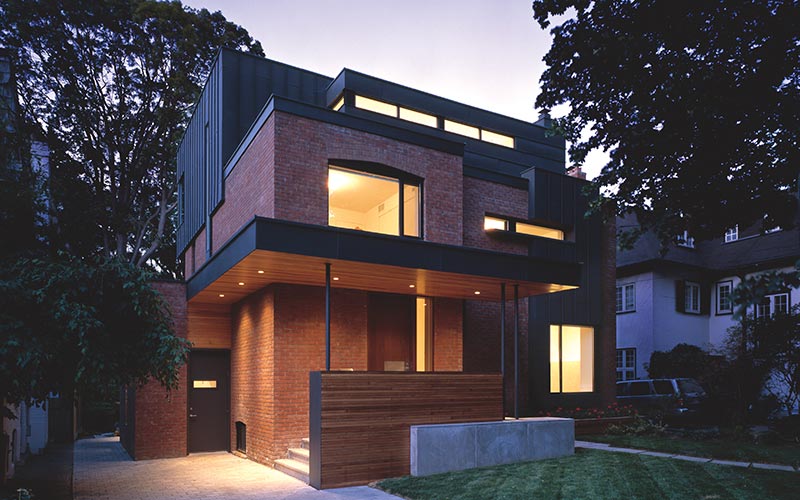Residential
Cedarvale Residence
A renovation and addition to an existing house built in 1930, this project presents a model for transforming and modernizing traditional residential architecture on established Toronto streets through a rigorous exploration of unifying elements of new and old.
The client’s mandate was to convert the old dwelling into a new home for a young and expanding family of four. The renewal of the existing house rectifies the shortcomings of the original – lack of relationship to the ravine, small windows and a series of independent small rooms.
Salvaged brick from demolished portions of the house were reused to add a mudroom and to infill window openings. The memory of these windows is preserved by retaining the original stone sills and arched brick lintels. New and old are knit together: black zinc panels slide over the existing brick box, adorned by Ontario limestone, and cedar siding.
Inside, the original Arts and Crafts stair was carefully restored as the central “spine” and artifact of the old house. The interior spaces intentionally refer to the classic formality of room differentiation. However, open corners and cut-out slots in the walls allow spontaneous views from room to room. A bold gesture is the kitchen island which combines a stainless steel sink, butcher block and cantilevered walnut table.
The master bedroom suite on the new third floor is oriented towards the back yard, perching like a tree house amidst the densely wooded ravine. The master bathroom cantilevers out over the existing house, with a bathtub located at the corner window.
Modernizing the house redefines its presence on the street. What was once a bland, faux Tudor two-storey home has now become a successful exploration of adaptive reuse in residential design.
